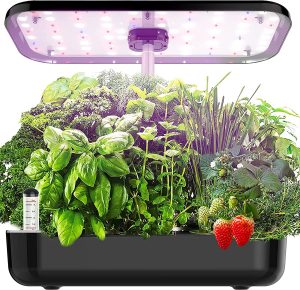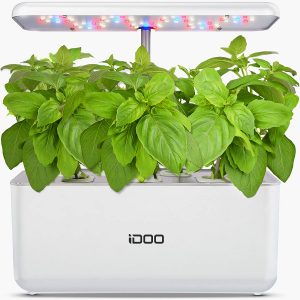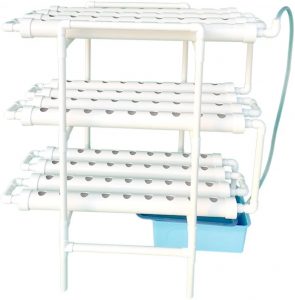Gardening 101: A Gardening Beginner's Guide
Lots of people start their new eco-friendly, environmentally-sustainable lifestyle with gardening. If you count among them, you are clueless how to begin and you want to know all the ins and outs of gardening, this mini gardening 101 guide should come in handy. Expect to find some clever, useful, and easy to follow gardening tips for beginners in these next few lines. After all, you will not only be helping the planet, but also preparing to enjoy some of the tastiest vegetables, herbs, and fruits you have ever had, so the journey is well worth it!
Why Learn How To Garden?

Different people have different motivations why they would like to embrace gardening:
- Some people would like to be able to grow their own organic, eco-friendly, 100% natural crops, fruits, vegetables, or edible herbs in their gardens to preserve their health and enjoy more flavor and taste. Compared to mass produced and often times imported products, the crops in your garden will have real taste and flavor, something that you might have been missing in the last years.
- Some people are interested in saving money on their grocery shopping, and having a garden right in the backyard where they can plan and pick their own tomatoes, cucumbers, pepper bells, or parsley is definitely going to lower their shopping bills.
- Others are mostly interested in making sure their plates are only filled with the healthiest, most organic products that contain no traces of toxic chemicals and fertilizers they can eat and cook without having to worry their health or the well-being of their children will be put at risk.
- Lots of people take on gardening 101 lessons or use self-teaching tutorials like this one here as a means of nurturing their passion or newly discovered hobby. Gardening means investing yourself in a pleasant, relaxing, and somehow demanding activity that will generate lots of benefits.
- Many people have embraced gardening as a way of showing their willingness to live a more environmentally-sustainable life and buying fewer products that are generated by polluting-industries helps them achieve this.
Gardening Tips For Beginners
One of the first things you will need to decide is what should you grow in your new garden. Provided you do not see yourself growing oats or barley, don’t do it. Only concentrate on growing those vegetables and fruits or even edible flowers and herbs that you and the rest of the members of your household enjoy eating periodically.
Use Your Common Sense
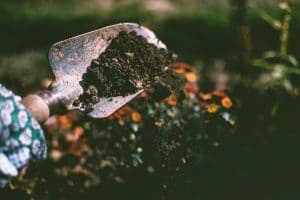 Make the most logical choices that will also make a lot of sense in relation to the geographical region where you live. You may want to plant your own avocado or or oranges, but if the climate in your area does not allow you to do it, your hard work will not pay out. Make sure that you familiarize yourself with your exact gardening area and know the estimate dates for the first and the last dates for frost. If you can, get in touch with a few local gardeners in town and learn what crops they particularly focus on and which ones you should expect the worst outcomes for. For example, as much as you might enjoy certain watermelon varieties such as Carolina Cross, you might need to redirect your attention toward a different variety like the Blacktail Mountains. Why? Because you will considerably shorten the amount of time needed for the watermelon crop to mature, for starters. You may also live someplace where high temperatures might be a rare occurrence. On the other hand, if you live in the south, and you are trying to grow cucumbers or peas that are known to prefer smaller temperatures, you are also going to encounter plenty of challenges.
Make the most logical choices that will also make a lot of sense in relation to the geographical region where you live. You may want to plant your own avocado or or oranges, but if the climate in your area does not allow you to do it, your hard work will not pay out. Make sure that you familiarize yourself with your exact gardening area and know the estimate dates for the first and the last dates for frost. If you can, get in touch with a few local gardeners in town and learn what crops they particularly focus on and which ones you should expect the worst outcomes for. For example, as much as you might enjoy certain watermelon varieties such as Carolina Cross, you might need to redirect your attention toward a different variety like the Blacktail Mountains. Why? Because you will considerably shorten the amount of time needed for the watermelon crop to mature, for starters. You may also live someplace where high temperatures might be a rare occurrence. On the other hand, if you live in the south, and you are trying to grow cucumbers or peas that are known to prefer smaller temperatures, you are also going to encounter plenty of challenges.
Some crops are prone to mildew when the humidity is high. Keep in mind these are just a few of the main factors that you are going to need to familiarize yourself with before deciding what to plant and grow in your garden. If you are aiming for a smaller garden, do not focus on trying to grow huge pumpkins that will need a large area to spread. If you plan on storing some of your crops, you will need to be even more careful when planning the way your garden is going to look like. Not all vegetables and fruits can be stored in the long term, so make sure you start small and mainly focus on produce you will be able to eat fresh, as is.
Select The Best Location For Your Garden
If you have more than one alternative locations for your upcoming garden, make sure you pick a spot with plenty of natural light from the sun:
- at least five hours of nonstop light on a daily basis for fruits, especially for gardens located in the north
- partial shade for herbs, vegetables, and greens
- southern gardens could use the shade in the late afternoons
Your access to your garden and the way you will be able to water, pick and care for it will also contribute to this decision. If you will not be able to directly see your garden from your kitchen window, for example, you will also most likely forget to water it and do all the necessary and continuous upkeep work.
Neglecting a garden could mean the end of it, so choose the location carefully. Also, keep in mind that an area with powerful winds or regions where frosting is a regular occurrence will also introduce you to a series of additional problems that you will need to take care of, so choose wisely. If there are any wild animals nearby or if you plan on setting up your new garden near a playground for children or pets, consider all the risks. Namely, the risk of pets and wild animals randomly visiting and dashing through your beloved garden. Fresh seedlings will have a hard time coping with these issues and you will also need to find the best deterrents.
Decide Upon The Type Of Garden Beds You Want
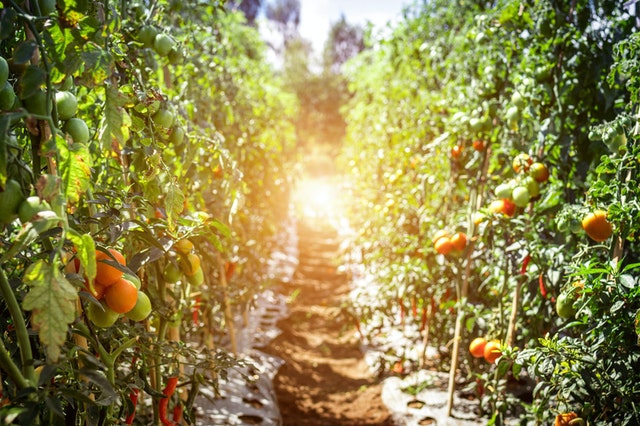 The type as well as the size of your new garden beds are other important factors that you will need to ponder upon. A raised garden bed will not only look better form an aesthetic point of vie, but you should also have an easier time working on it. However, the same raised bed will tend to dry out faster and, if you live in an area with soil that is excessively dry, a sunken bed should come in handy soaking in and preserving more water.
The type as well as the size of your new garden beds are other important factors that you will need to ponder upon. A raised garden bed will not only look better form an aesthetic point of vie, but you should also have an easier time working on it. However, the same raised bed will tend to dry out faster and, if you live in an area with soil that is excessively dry, a sunken bed should come in handy soaking in and preserving more water.
It is advisable to consider planting a garden using beds and blocks instead of beds of single plant rows, with the beds placed three or four feet apart. Make sure their narrow width allows you to easily access the middle from both sides. The garden blocks should count no more than ten feet so you can prevent stepping into the beds.
Plants should be placed using row- or grid-like patterns to optimize the space for growth and keep walking there at bay. Also, consider using square or even rectangular garden beds or let your imagination run wild and choose your preferred shape. It is also possible to grow a garden in vintage water tanks used by your livestock or sectioned drain pipes.
Start Small
Starting small is critical so you can allow every plant to enjoy the space it needs to grow. Keep in mind that while the plant seeds may look extremely small in size, a full-grown plant is nothing compared to them. Always design your garden keeping the end results in mind so you can prevent overcrowding your and preventing them from thriving. You could generate just as much, if not more crops than a huge garden that cannot be correctly tended.
More Gardening Tips For Beginners: Consider Vertical Gardening
Growing a vertical garden means enjoying more crops such as berries, fruits, nuts, or grains in a smaller space. Peas, tomatoes, or cucumbers can also be successfully planted and grown on the vertical, so if your space is rather limited, do not hesitate to use this alternative. You could also focus on using grow bags and special gardening containers and rapidly learn how to garden in an even smaller space. Consider containers that can water themselves instead of using regular flower pots made from terracotta as the latter are known to dry out a lot faster.
Get Basic Garden Tools
By selecting the most suitable garden tools, you should manage to make gardening a genuine pleasure instead of an extra chore. Garden and scuffle hoes, leaf and dirt rakes, garden shovels and hand tools are the main tools you should focus on buying. Avoid tools made from plastic and instead focus on sturdy metal tools you can purchase at yard sales or local garden centers. Make sure you select the right size for your tools so you can limit the injury risks.
Testing the soil for acidity and building it, using the best transplants and seeds and learning how to plant the seeds three times deeper than the seeds’ diameters are also important gardening 101 elements that you are going to have to familiarize yourself with, especially when your aim is to grow a 100% organic garden.
FAQ
Usually, a garden needs at least five hours of nonstop light on a daily basis for fruits, especially for gardens located in the north. If you plan on growing herbs, vegetables, and greens, they will need partial shade, with southern gardens benefitting from shade in the late afternoon.
A raised garden bed will not only look better form an aesthetic point of view, but you should also have an easier time working on it. However, the same raised bed will tend to dry out faster and, if you live in an area with soil that is excessively dry, a sunken bed should come in handy soaking in and preserving more water. It is ultimately a personal decision that you will need to rely on your own considerations.
Vertical gardens are a perfect way to both maximize restricted space and recover disregarded space by converting vacant space into something aesthetically appealing and creatively inspiring. They should be seen as a natural tapestry on a house.
You can either use a specialized pH test or use a garden trowel, small containers, white vinegar and baking soda. Scoop some soil in container, add half a cup of water and stir, add half a cup of baking soda and if you notice the soil in the recipient starts to fizz, you are looking at acidic soil. The more vigorous the reaction, the more acidity there is in the soil. Repeat the same procedure by replacing the baking soda with white vinegar. Any bubbling reaction you will notice will be an indicator that you are dealing with alkaline soil.
Invest in sturdy gardening tools made of metal such as garden and scuffle hoes, leaf and dirt rakes, garden shovels and hand tools.

